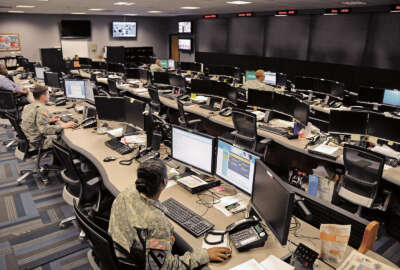
A high-tech US Army includes analytics
The U.S. Army’s mission is to keep Americans safe. It takes hundreds of thousands of high-quality personnel to do that, which means “talent management” is...
The U.S. Army’s mission is to keep Americans safe. It takes hundreds of thousands of high-quality personnel to do that, which means “talent management” is vital to that end goal.
For a few years, the Army has increased its use of data and analytics to step up its game to retain talent and work with them to develop skills toward the goal of a motivated and effective workforce.
“We have the technology to be able to see our people to much greater depth,” said Lt. Col. Kristin Saling, Chief Analytics Officer at Army Talent Management Task Force, Office of the Assistant Secretary of the Army (Manpower & Reserve Affairs), on Federal Monthly Insights — Analytics in Government.
Saling remembers, not so long ago, out-of-date approaches to talent management that left senior leaders making assumptions. The future now means multi-domain operations.
“As we started entering an era of more rapid change, where we had a lot of structure changes coming back and forth, we had changing mission sets, we started looking at how we could move faster to get after new technologies,” Saling said on Federal Drive with Tom Temin.
The Army Talent Management Task Force deals primarily with active-duty military personnel, as well as those from the Guard and Reserves.
“We really started to realize we needed to bring together all this data that we had on our people to get after our force and understand essentially how we get the right person in the right job at the right time and how we change our processes so that we can do this over time,” Saling said.
The Army, Saling said, has a comprehensive data inventory, due in large part to the Integrated Paid Personnel System Army.
“They had already done a large amount of the system mapping, but they’re undertaking — and I don’t envy them this task – getting up to 187 different personnel systems and trying to determine which of those are going to sunset and which of those are going to be pulled into the larger data sphere,” Saling said.
The first step, Saling said, was taking a look at what data they actually had.
“We really spent some time mapping out the kinds of questions that we wanted to be able to answer for our decision-makers about the force, Saling said. “And we found out, while we have a lot of data, we’re going through the same kind of data quality issues that everybody else goes through. We didn’t have answers in a lot of spaces. We had a lot of blanks.”
The analytics that the Task Force is developing will solve a myriad of problems. The main reason for the comprehensive data collection, Saling said, was to create a talent marketplace for the army.
“Previously, we had everybody assigned from a central location at Human Resources Command, Saling said. “The branch managers were responsible for understanding the talent sets that they had within their inventory and making those alignments. They had some pretty detailed processes for it, but that was the essence of it. And we decided through talent management that we as the army wanted to give our personnel greater control of their careers, the ability to chart their own career trajectories, to set their goals, and to take a larger role in their development.”
Copyright © 2024 Federal News Network. All rights reserved. This website is not intended for users located within the European Economic Area.
Peter Musurlian is a producer at Federal News Network.
Follow @PMusurlianWFED





